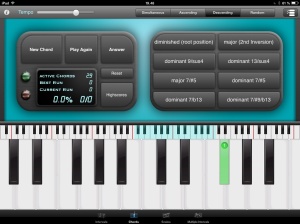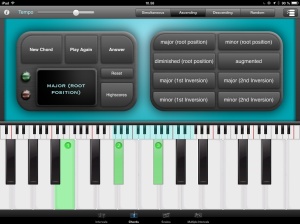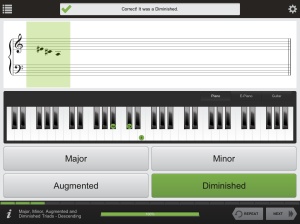Will new technology revolutionize ear training and music theory studies?
Good aural skills are at the core of musicianship. A pianist needs a good ear not only for intervals but also for polyphony and harmony.
Pianists with secure and fast aural perception are known to learn faster and perform more solidly, fluently, with more natural flow, with fewer memory lapses, and with greater spontaneity than other pianists. In piano playing, security brings freedom.
A sharp ear results from many years’ practice, and the younger that one starts training, the better. That’s why I would advise my younger readers to steal 15 minutes daily even from the etude-practice-session in favor of ear training. It surely will pay off, and the etude-playing will most likely benefit, too.
Nowadays, there are loads of mobile applications that aim to help a musician improve aural skills. When I was a kid, some thirty years ago, even mobile phones didn´t exist… Had we been blessed with today’s gimmicks, I would have been crazy about these apps, and, quite frankly, I think they would also have helped to make some things easier for me later in life.
Using apps has certain benefits compared to old-school ear training:
- They are easy and fun to use
- A student can advance at his or her own pace
- They assist to monitor progress
- They are great for those who feel shy in a classroom
- One effectively learns the concepts and names of musical phenomena
- One can practice in a bus, on a train, on a beach, wherever
I skimmed through several of the free apps on the iPad App Store but I couldn’t find any to meet the criteria for a serious musician’s or music student’s needs. Correct me if I am wrong.
With an affordable price, however, one can buy some pretty useful applications. I found three.
They are goodEar Pro ($3,99), EarBeater ($7,99), and Better Ears ($14.95).
GoodEar Pro is an easy-to-use and customizable app. It features exercises for intervals, chords, scales, and melodies.
With goodEar Pro one can also practice playing melodies by ear, which is a feature that the two others do not have. The app uses jazz chord markings and it does not feature chord progression exercises.

With EarBeater one can drill intervals, chords, and scales. The app has a strong pedagogic approach. It divides exercises into small tasks and makes it easy to advance step by step. Everything is explained thoroughly, which makes the app especially useful for beginners. However, I miss the option to drill the chord progressions.
Better Ears is not only for ear training but also is a music theory tutor, hence the higher price compared to other two.
It includes ten exercises: interval recognition, scale recognition, chord recognition, chord progressions, pitch recognition, tempo recognition, key signature recognition, interval music reading, scale music reading, and chord music reading.
All three apps are useful tools for self-study. Personally, I find Better Ears the best since it has a large number of features, including the possibility to drill chord progressions, something that is crucial for pianists. It also uses chord degree symbols (Roman numerals), which are more familiar to classical musicians.
All three apps have an easy-to-use interface and they can provide a challenge at the beginner and intermediate levels. Better Ear is also suitable for more advanced students. To me, the most obvious limitation in all of them is the lack of exercises in rhythms and polyphonic hearing.
Here is an excellent and thorough review comparing goodEar Pro and EarBeater with a lot of screenshots.
APPS vs CLASSROOM
Can the mobile apps replace the ear training classes at music schools, then? I would say no. The apps can help a lot, but there are still things that must be done in the real world.
One needs classes and a teacher to get support. The face-to-face guidance from a teacher can be motivating and keeps one going week after week. A clever teacher also recognizes the student’s personal needs better than any app. For many, learning in a group is more effective than learning with a technical device. Musical dictations, such as melodic, rhythmic, and polyphonic dictations, are easiest to practice in classes, although the training apps would apparently be easily realizable.
Besides, the two drills that I believe improve the ear the most – sight singing and playing music by ear – do not need the help of an iPad.
It would be interesting to know how much the iPad or other music apps are actually used among musicians. Do many teachers recommend them to their students?




Writing posts is pain in the ass.I know where you can get unlimited articles for your site, type in google:
Anightund’s rewriter
LikeLike